Caring for peonies in August and September
Peony is a perennial flowering plant that, with proper care, easily survives even the coldest winters. It fades already in June, and the remaining time accumulates strength for wintering and the next flowering.
The culture requires special attention at the end of summer. Proper care of a peony in August will help it accumulate enough useful substances to withstand winter cold snaps and delight it with abundant flowering and shoot growth next year.
How to care for peonies in August and September for lush flowering
Caring for peonies in summer and autumn is no less important than providing them with comfortable conditions during flowering.. Already at the beginning of summer, the plant has time to bloom, and the splendor of peonies next spring depends on how much attention the gardener pays to it after that.
Particular attention is paid to culture at the end of summer (August) and in the first two months of autumn. At this time, the plant is fed and watered, transplanted to a new place and cut off.
Proper watering
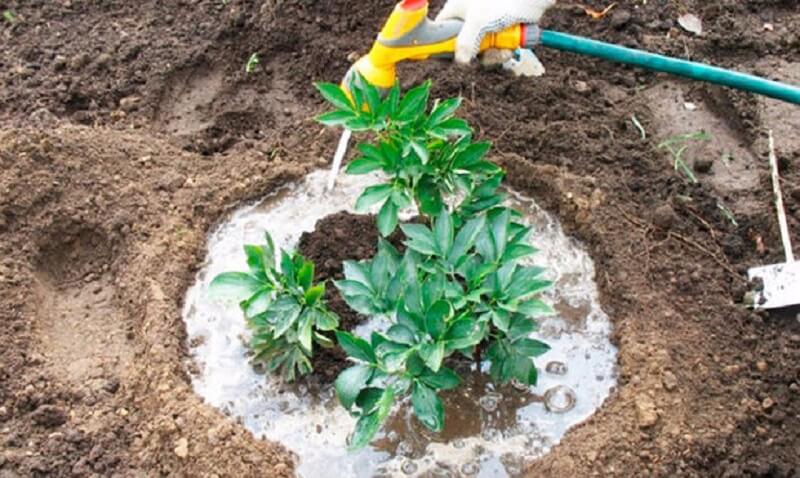
Peonies are watered only during dry periods. If summer and autumn are rainy, you can do without additional moisture.
Attention! For peonies, use settled water at room temperature. Ice water slows down metabolic processes, causes root rot, and weakens plant immunity.
The procedure is carried out early in the morning or in the evening, when the sun is inactive. Otherwise, burns will appear on the leaves.
The amount of liquid depends on the size of the plant.If it takes only 0.5–1 bucket for 1 young bush, then you will have to spend 1–2 buckets for adult, overgrown peonies.
Peonies are watered at the root. On average, the procedure is carried out once a month. If August turns out to be hot and dry, the soil is moistened more often - every 2 weeks.
Trimming
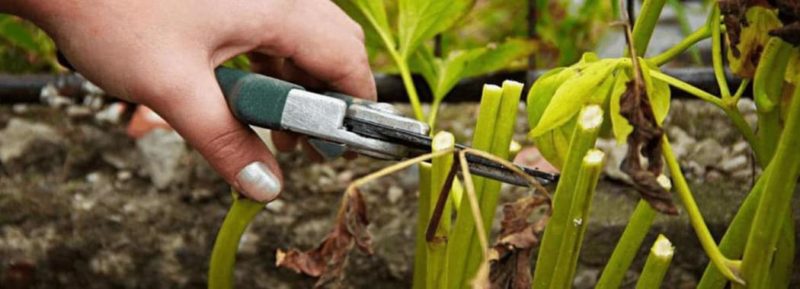
The timing of pruning peonies depends on the region where they are grown. In the southern and central black earth regions, it is recommended to prune bushes at the end of October; in the Moscow region, St. Petersburg and other cities of central Russia - in late summer or early autumn.
In Siberia and other regions with cold climates, it is better to cut peonies in August or late July.
In summer, the bush is pruned so that the remaining shoots have 3-4 leaves. This will ensure minimal photosynthesis, and the plant will not die before the onset of cold weather.
If autumn pruning is planned, withered, yellowed and fading parts are removed from the bushes during August. They must be burned, as there is a risk of infections and pests appearing on the cut parts.
By autumn, the leaves acquire a bronze, yellowish or reddish tint. In October, the plants are pruned so that the height of the remaining part of the stems above the ground does not exceed 3 cm.
Attention! Experienced gardeners believe that the best time to prune flowers is the second half of autumn. The leaves of a healthy, viable peony remain green and firm until frost. If they wither or change color ahead of time, the bush is weak and sick, most likely it will not survive the winter. Therefore, late pruning helps ensure that the plant is healthy.
After pruning, the cut parts of the plant are treated with ash to reduce the risk of fungal infection. 1 bush uses up to 200 g of product.
Loosening and mulching the soil
Loosening is a necessary step in peony care not only in August, but throughout the entire warm period. The procedure destroys the earthen crust, which interferes with root air exchange, promotes stagnation of moisture, and the development of fungal infection.
Loosen the soil around the bush, moving 15–20 cm away from it, to a depth of about 5 cm. Do this carefully so as not to damage the roots. This soil treatment is carried out the next day after each watering and precipitation.
Advice! Weeds are carriers of diseases and pests. It is recommended to remove them even around mature plants. This is convenient to do when loosening.
The soil around the peonies is mulched with a layer of humus, peat, rotted straw or hay. Fresh fallen leaves and weeds should not be used for these purposes, as they often contain fungal spores and small pests that spread to the plants.

Mulch solves several problems at once:
- Improves air exchange. Mulching prevents the formation of an earthen crust after watering, so peonies will need to be loosened much less frequently.
- Normalizes water balance. Such layers prevent moisture evaporation and absorb large amounts of water. The soil mulched around peonies will not dry out, since the liquid evaporates from it more slowly.
- Protects against diseases and pests. The additional layer prevents infections from entering the root system of the bush and prevents the plant from being infected by pests and fungi that are located underground.
Feeding
In order for the bush to accumulate enough useful substances, withstand winter frosts and begin to bloom profusely next year, it is important to feed it already in August:
- The first fertilizing is applied in early August. A solution of mullein (1:10) is suitable.
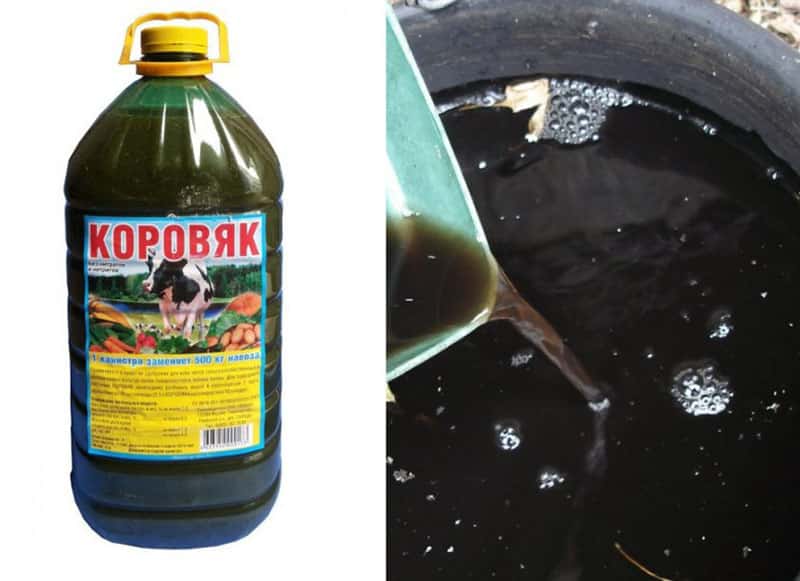
- The second fertilizer is carried out after 2 weeks. Prepare a mixture of a bucket of water, 12 g of potassium sulfate and 25 g of superphosphate.
The day before fertilizing, water peonies so as not to burn the roots. The composition is poured under the root. For 1 plant use 5 liters of product.
Advice! A solution of potassium sulfate and superphosphate is often replaced by 1 kg of ash diluted in 10 liters of water. They also use the dry method of fertilizing, pouring ash under the bush.
The procedure is carried out early in the morning or in the evening, when the sun is inactive. Peonies should not be fed after pruning.
Prevention of diseases and pests
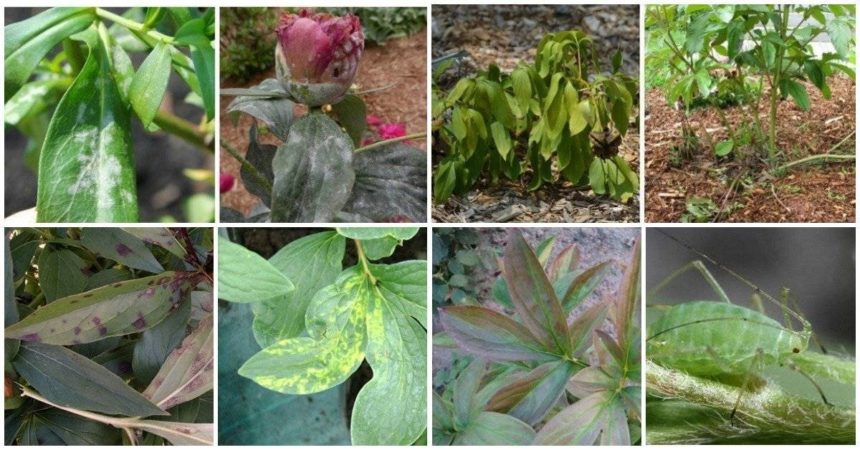
The main rule of prevention is a clean garden. Remove all weeds, fallen leaves, plant debris near peony plantings.
Every 2 weeks the bushes are inspected: all weak and dry shoots and stems with spots are cut off.. Sick plants are dug up and removed from the garden, and healthy ones located next to them are treated with fungicides.
Important! What to do with peonies in July? During this period, the last wilted inflorescences are picked, the bushes are watered, the soil is loosened and mulched. It is not necessary to fertilize in July.
At the end of summer, preventive treatment of plants is carried out. They are sprayed with 1% Bordeaux mixture or a product prepared from a bucket of water and 3 tbsp. l. copper sulfate.
Replanting peonies in August
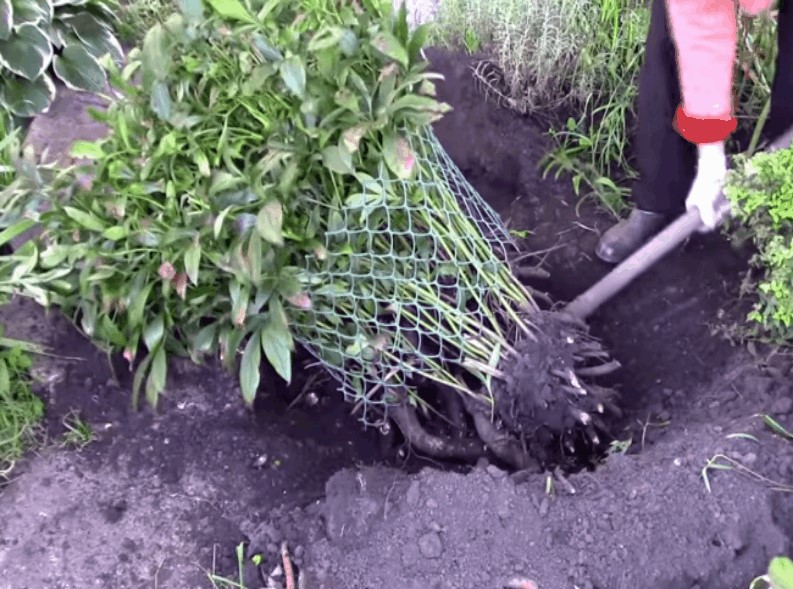
It is not recommended to grow peonies in the same place for a long time. In this case, the soil loses most of its nutrients, the risk of developing diseases and pests increases, peonies may turn black, reduce the intensity of flowering, or stop blooming altogether.
To rejuvenate peonies and improve the intensity of bud formation, they are divided. This procedure will help propagate the plant.
It is best to divide peonies in August (in the second half).By this time, the plant stops growing buds, and there is still enough time before frost for it to take root after planting.
The frequency of the procedure depends on the shape of the plant. Tree-like peonies are replanted once every 6-7 years, and herbaceous ones - once every 4-5 years.
How to divide and transplant peonies in August:
- Bushes are dug up in dry, cloudy weather, early in the morning or in the evening. The bush is dug in a circle at a distance of 20 cm from the stems, holding the shovel vertically. It is important to minimize damage to the root system.
- The plant is taken at the base and pulled out. In this case, it is important not to pull out, but to carefully pull the peony, helping to free the stuck roots with a small shovel.
- The soil is shaken off the bush, the roots are washed under running water. This will make it easier to divide the plant.
- The root system is inspected. Remove all dry, dead, rotten roots. Cut off parts with suspicious growths and spots. The plant is dried for 5 hours in the shade.
- The root system is divided with hands, a knife or an ax. Each part must have roots 20 cm long and at least 4 buds.
- The finished sections are immersed for 30 minutes in a light pink solution of potassium permanganate. The cut parts are sprinkled with ash, the rhizome is dipped into a clay mash.
- In a well-lit area or in partial shade, dig holes with a diameter of 70x50 cm. A 15 cm layer of drainage (broken brick, ground ceramics, small crushed stone, expanded clay) is poured onto the bottom. A solution of copper sulfate is poured into the well.
- The soil taken out of the hole is mixed with 2 buckets of humus, 0.5 tbsp. superphosphate, 0.5 tbsp. potassium chloride. The resulting mixture is poured into the hole, and the peony is planted there without deepening the root collar.
- The soil around the peonies is compacted. The soil is moistened, using a bucket of water for each plant, and mulched.
Conclusion
Caring for peonies in August is no less important than during flowering. The quality of the next flowering depends on how accurately the rules of agricultural technology are followed. If the plant does not receive enough nutrients and is not properly prepared, it will not survive the winter.
August is the optimal time to divide and replant the bush. This procedure helps to rejuvenate and propagate the plant. The main thing is to follow the basic rules and act carefully.